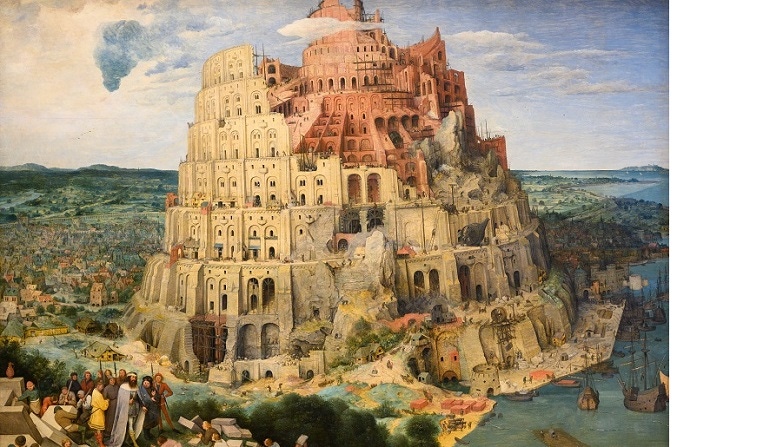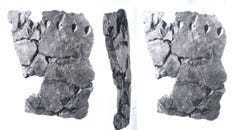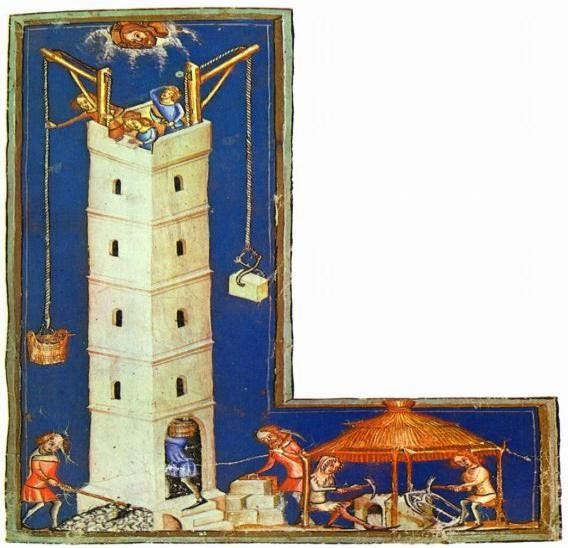In Part Two of this six-part series, concrete historian Luke Snell explores the origins of modern concrete and masonry looking at fired brick with tar mortar.

In my quest to learn the origins of concrete, I chose as a starting point the sun-dried brick with mud as its cement or binder. (See Part One here.) But sun-dried bricks were not very strong or durable, thus our ancestors began a search to improve the brick. The improvement appears to have been inspired by the development of pottery, which also eventually led to the discovery of new cements.
Archeologist tell us that Homo sapiens figured out how to make and control fire about 125,000 years ago. This was a major milestone in man’s development. With fire they had the means to cook food, keep warm in cool weather, security from wild animals and insects, and a place for social interaction. We are still drawn to campfires where we sit staring into the flames, share food, sing songs, tell stories, and pass onto younger generations traditions from our past.
Campfires are not extremely hot with temperatures around 1000 F. Someone got the idea that they could harden clay by using the heat of the campfire and begin experimenting with this new technology. As a result, around 29,000 years ago people in Central Europe made a clay figurine and put it in a campfire. Archeologist have determined that the Venus of Dolce Věstonice it was fired at about 800 F (well within the temperature of a campfire).

This figurine is the oldest artifact in which clay had been fired. Thus we can conclude that the process of using heat to improve an object made of clay was understood or was in development by 29,000 years ago.
Pottery artifacts using this same technique were found in China, dating to 20,000 years ago. This fired clay pottery provided better containers for storage of food and liquids and represented a major step in finding new applications for this advancing technology. The technology of making fired clay pottery appears to have spread slowly. Archeologist have found fired clay pottery in Japan and Russia from 16,000 years ago and in the Middle East from 11,000 years ago.

Applying this technology to make a better brick first appears in China around 6400 years ago. These bricks were fired at about 600 F (easily achieved by a campfire). These bricks were used as a flooring material for houses.
The Bible (Genesis, Chapter 11) mentions using fired brick in the construction of the Tower of Babel. Biblical scholars estimate that this event occurred about 2200 B.C. ago in the Middle East. Various dates are attributed to when this account was written varying from 1300 B.C. to 500 B.C. The builders that attempted to build this tower must have understood that mud bricks were not strong enough for the planned tower so they decided to make and use fired bricks. Thus we know that the technology of making fired bricks was understood at least by the time of the event was recorded. The tower was never completed but it did become a popular topic of religious artists.

The Biblical account also introduces the use of tar as a mortar. Since there were several tar pits mentioned in the Bible in this general area (Genesis chapter 14, verse 10), tar appears to be a logical material for them to have used.
Tar would have been relatively abundant and easy to collect. Tar was superior to mud as a mortar, however its use was limited to areas that had tar pits. It would also have been rather unsightly and so thankfully this technique never caught on.
In the next two articles in this series, we will discuss theories of how new and improved cements were discovered and how this discovery resulted from the campfire and attempts to make improved pottery.See Part Three.
Luke M. Snell is a concrete historian and Emeritus Professor at Southern Illinois University Edwardsville.
About the Author(s)
You May Also Like




